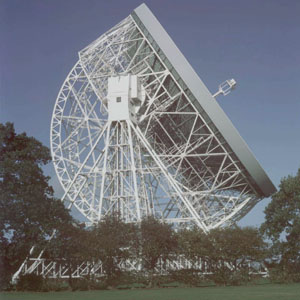
Two months from now the International Telecommunications Union will hold its World Radio
Conference in Turkey. Radio astronomers are hoping for new regulations to curb emission from
satellites that are polluting their observations.
Man-made radio emission has increased
dramatically over recent years with the advent of satellite telecommunications and digital broadcasting
– so much so that radio astronomy now finds itself under threat from the very technology that it
nurtured. Even microwave ovens and car remote locking systems contribute to the rising noise that
pollutes astronomical observations.
Radio astronomy has revolutionized our understanding of
the universe, revealing, among other things, radio galaxies, quasars, pulsars and the cosmic
background radiation. Indeed, radio is the only wavelength other than optical that is not blocked by
the Earth’s atmosphere. Radio waves pass through the clouds of gas and dust that block out light
waves, revealing parts of the universe that would otherwise remain hidden.
Very long baseline
interferometry links radio telescopes around the world to give the highest resolution available
anywhere across the entire electromagnetic spectrum – 10 microarcsec – which is equivalent to the
angle subtended by a golf ball on the moon, 400 000 km away.
Several organizations protect
the interests of radio astronomy and negotiate with the governing bodies and communications giants.
However, many compromises have to be made along the way. In May 1999 an agreement was
concluded between radio astronomers and Iridium, which uses a network of satellites transmitting in
the 1616-1626 MHz frequency range. These transmissions seriously pollute observations of the 1612
MHz spectral line of the hydroxyl radical, which gives a unique view of stellar evolution and galactic
dynamics. The agreement, which was signed by the President of the European Science Foundation on
behalf of the various radio observatories and their funding agencies, guarantees low interference from
Iridium up to 50% of the time, which allows limited 1612 MHz research to continue.





